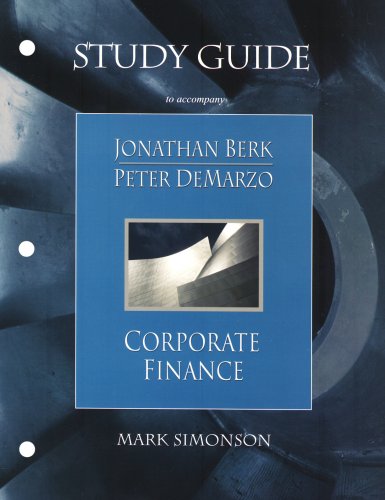Question
Background: You are the CFO of Tom Petty Memorial Hospital (TPMH). The hospital is located in the rural community of Free Fallen, MS and is
Background: You are the CFO of Tom Petty Memorial Hospital (TPMH). The hospital is located in the rural community of Free Fallen, MS and is a not-for-profit organization. The capitalization of TPMH has a cost of capital of 5% and cash reserves on the balance sheet of $20,000,000. The management team has been considering expanding the hospitals service mix to include an ambulatory surgery center (ASC). The management team, with your advice, has committed the hospital to use up to 50% of cash reserves to invest in the ASC. After the last team meeting the CEO approached you with three alternative scenarios relative to the hospitals cash reserves. He has asked you to evaluate the investment in the ASC relative to two other investments. TPMHs time preference for holding each of the investments is 10 years TPMHs cost of capital is 5% and management recommended using the cost of capital as the opportunity cost rate. Because you have been participating in these meeting you have already started discussions with an investment banker on potential investment alternatives. Option A: The investment banker has identified a tax-exempt bond with a par value of $10,000,000 that matures at the end of the tenth year. The coupon rate on the bond is 6%. Option B: The investment banker has identified 100,000 share of common stock with a purchase price of $100.00 per share. The shares have consistently over the past ten years paid out dividends at the rate of $5.00 per share. Option C: Build the ASC at a cost of $10,000,000. Projections for the operations of the ASC for each year of the first 10 years of operations are as follows: Revenues $1,000,000 Expenses $ 600,000 Operating Income $ 400,000 E ( R ) 4.0%
Step 1: Build an assumptions table and timeline to reflect each option. Value the cash flow streams of interest in Options A, dividends in Option B, and operating income in Option C. Based on the cash flow streams what would your recommendation be relative to the discounted cash flow streams.
Step 2: You have had further discussions with the investment banker and been advised there are no anticipated changes in the interest rate market for bonds at the end of 10 years. You have had further discussions with a financial advisor and it has been determined the value of the common stock at the end of the 10th year is likely to be $111.00 per share and the shares can then be sold in the secondary market. He has also advised you that the real estate value for the ASC at the end of the 10th year is likely to be $15,000,000 based on real estate appreciation tables for healthcare assets. Determine the present value of the par value of the bond, the shares of common stock if sold in the secondary market, and the real estate value of the ASC. Determine the total present value of the cash flow stream and terminal values of each investment. Determine the IRR of each option.
Step 3: Reassess your recommendation under Step 1 and determine if you would still support your initial recommendation. Why or why not? Reporting Format (in Word): Option A Option B Option C Present Value of Cash Flow Steams Present Value of Assets 10 Years Total Present Value IRR of Investment
Step by Step Solution
There are 3 Steps involved in it
Step: 1

Get Instant Access to Expert-Tailored Solutions
See step-by-step solutions with expert insights and AI powered tools for academic success
Step: 2

Step: 3

Ace Your Homework with AI
Get the answers you need in no time with our AI-driven, step-by-step assistance
Get Started


